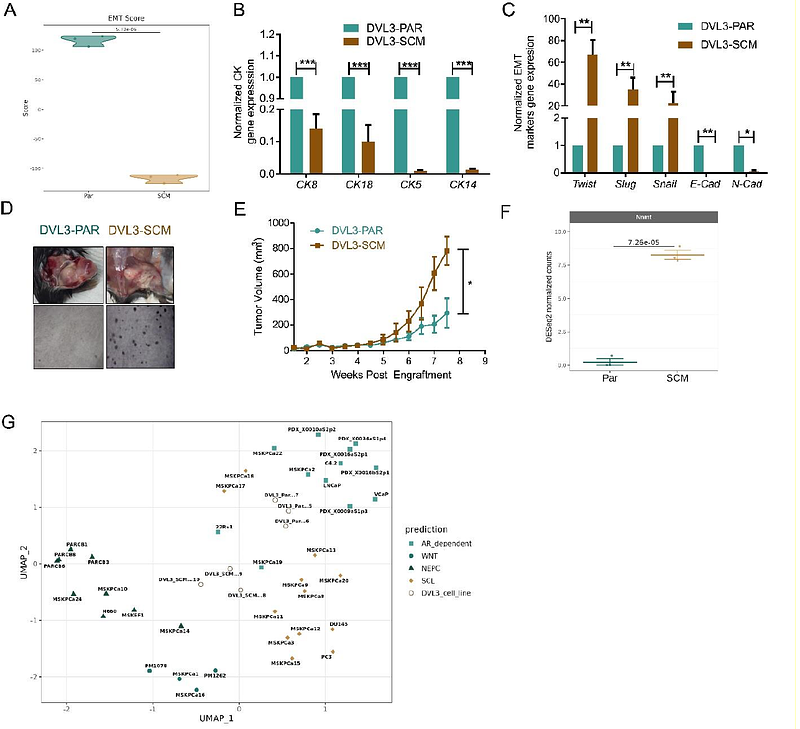NNMT is a biomarker of prostate cancer cells with a mesenchymal phenotype and induces sensitivity to metabolic agents

NNMT is a biomarker of prostate cancer cells with a mesenchymal phenotype and induces sensitivity to metabolic agents
Carreira, A. S. A.; Ciuffreda, M.; Thongon, N.; Haughey, C. M.; Pickard, A.; Eddie, S. L.; Steele, R. E.; Cerri, E.; Belli, R.; Peroni, D.; Facen, E.; Caffa, I.; Ghanem, M.; Nencioni, A.; Lunardi, A.; Tebaldi, T.; Mills, I.; Provenzani, A.
AbstractCastration-resistant prostate cancer (CRPC) refers to a population of prostate cancer patients no longer responsive to androgen deprivation therapy (ADT). Metastatic CRPC (mCRPC) is currently lethal, underscoring the urgent need to identify novel therapeutic targets to reverse disease outcome. Unresponsiveness to ADT is multifactorial and often associated with prostate cancer lineage plasticity, leading to the emergence of several CRPC subtypes. Recently, stem cell-like CRPC (CRPC-SCL) has been defined as a specific class of CRPC characterized by the absence of AR expression, dependency on YAP/TAZ activity, and mesenchymal features. Here, we showed that YAP depletion in cellular models of CRPC-SCL leads to the downregulation of genes involved in EMT, including N-methylnicotinamide transferase (NNMT), which controls NAD synthesis and cellular energetics, competing with nicotinamide phosphoribosyltransferase (NAMPT) for nicotinamide. We identified NNMT as a marker of a human CRPC-SCL, while transcriptomics analysis of a murine-derived prostate cancer stem cell-like (DVL3-SCM) unraveled a strong upregulation of NNMT transcripts in respect to the parental counterpart (DVL3-PAR) along with an increased mesenchymal phenotype and aggressiveness in vivo. Critically, NNMT depletion in mesenchymal-like, but not epithelial prostate cancer cells, counteracts NAMPT inhibitor FK866 toxicity, maintaining cellular nicotinamide levels. Overall, we identified NAMPT as an effective molecular targeting strategy in CRPC-SCL subtype of therapy-resistant metastatic PCa cells with a mesenchymal, YAP-dependent phenotype.